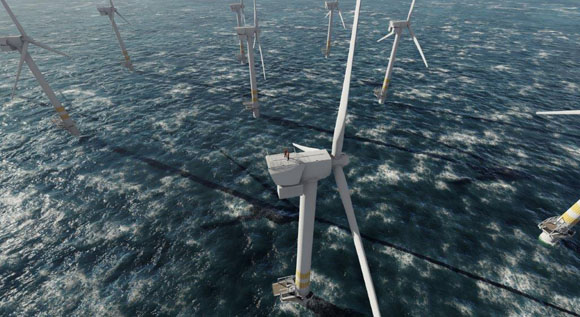New cornerstones for onshore and offshore wind
The Federal Government has set itself a clear goal: by 2030, renewable energy is to cover 80% of gross electricity consumption.
 © Adobe Stock / dragancfm
© Adobe Stock / dragancfm
The government’s Onshore Wind Strategy deals with a whole range of different issues, from improving the incentive effects of the Renewable Energy Sources Act, to offering better financing conditions for direct contracts between energy producers and electricity consumers. It also sets out plans to further facilitate repowering and deals with the question of how wind energy sites can be made available to supply industry. The key issues paper on the Onshore Wind Strategy can be found here (in German only).
2nd North Sea Summit for offshore wind power stations in Europe
For the energy transition to succeed, we need to harness not only onshore wind, but also the power of wind at sea. Germany plans to increase the installed capacity of its offshore wind to at least 30 gigawatts by 2030 and at least 70 gigawatts by 2045. Yesterday, the second high-level Wind Summit (in German only) was held in Ostend, Belgium. The meeting was attended by the Heads of State and Government and Energy Ministers of Germany, Denmark, the Netherlands, Belgium, Norway, Ireland, the United Kingdom, France and Luxembourg, as well as the President of the European Commission Ursula von der Leyen and EU Energy Commissioner Kadri Simson. Business representatives from all participating countries were also present. The aim of the North Sea Summit is to advance the interconnection of offshore wind farms in the North Sea and to strengthen joint expansion.
The energy ministers and the EU Energy Commissioner signed a joint declaration of intent on the development of future “hybrid” offshore wind projects which are to connect offshore wind farms in different countries and use them for international electricity transport.
Further information
- Press release by the Federal Ministry for Economic Affairs and Climate Action: First Wind Summit: Habeck discusses priorities for wind energy expansion with broad circle of stakeholders (in German only)
- Press release by the Federal Ministry for Economic Affairs and Climate Action: Interconnection of offshore wind farms in the North Sea moving forward (in German only)

